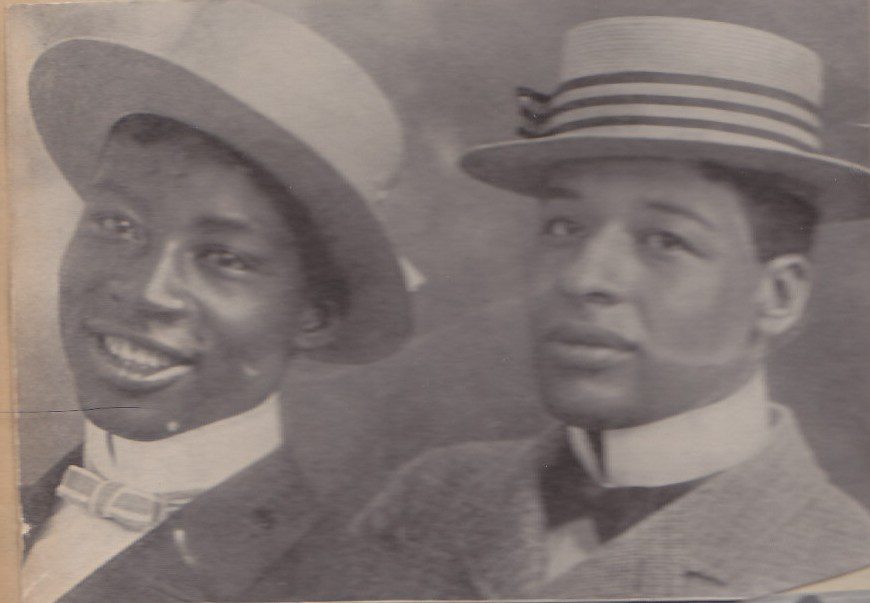
Plot
In Dahomey is an American musical comedy Broadway that opened on February 18, 1903 and soon after became an international hit. It is seen as the first musical Broadway to be written and played by blacks. The music was created by Will Marion Cook, a classically trained musician who brought ragtime rhythms to Broadway. Cook was a strong advocate for black roles being played by African Americans and strongly opposed minstrel shows and black face. The musical was very popular and completed 53 performances running for around four years.
This story starts in Boston with two men who are con artists named Shylock Homestead and Rareback Punkerton. Shylock Homestead is played by the famous Bert Williams and Rareback Punkerton is played by the famous George Walker pictured below. The two conmen find a pot of gold and create a strategic plan to go back to Africa to take over Dahomey. In the play, Dahomey is what we know today as Benin. Instead of getting to Africa, the two men end up in Florida. In Florida they try to con Cicero Lightfoot who is played by Pete Hampton. Cicero Lightfoot is the president of a society that the two men can see themselves colonizing. In the play there turns out to be a plot twist where Homestead is told that he is rich. Punkerton then creates a strategic plan to become Homestead’s trustee to get Homestead’s riches. After he succeeds in doing this, Punkerton takes on a new persona where he sees himself as a cultivated and polish black figure in the society. Of course, Homestead figures out Punkerton’s plan and cuts him off. The show peaks with a cakewalk. The two men end up having a misunderstanding with Lightfoot and become prisoners. Before being executed on Customs Day, they are able to get the king to secure the men their freedom by having him drink. With their freedom Homestead and Punkerton come to the conclusion that there is no place like home.

Music
Will Marion Cook was the principal composer of the show. Cook came from a spectacular background of music. He was trained as a classical violinist but moved from that genre of music because there were few opportunities for an African American doing classical music. This caused him to turn his interest into ragtime and cakewalks. Crook wrote a variety of music including show tunes, pop songs, and art songs. In the music of the play, the audience can see the incorporation of a variety of musical elements including folk music, blues, and ragtime. Specifically from these genres, the audience could hear syncopation, vernacular language, and cake walk. Swing along was the best well known song from the play. From this song, it was very clear the elements that came from black folk secular music. The audience could really hear the syncopation in the music that would bridge the end of one phrase to the beginning of the next. Crawford discussed how Cook used a lot of syncopation in the music of Dahomey to allude to the coon songs that were popular back then. The syncopation along with the classical element of the piano and the blues element of the solo singer really showed how versatile and experienced black people could be. The Broadway play even had a male quartet group play the song “Dat Gal of Mine”.
My Opinion
I believe that this musical was very essential to the assertion of the right to be from African Americans. Not only that, but the Broadway marked an extremely important achievement of black people with the evolution of their roles in musicals and theatre performance. Before this play, white people wanted to see plays that showed stereotypes that didn’t truly depict what an African American embodied and encompassed. Audiences would particularly want to see performances by black people who did minstrel performances. Although Dahomey has some racial stereotypes of black people in the play especially when looking at the cake walk, it really created a shift in the representation of black people specifically in the drama world. Because of this, I believe that this play was absolutely needed for black people. This set the forefront for black actors to span their interests in theatre and move away from the typical role of the bulging eye, dark, creepy black person.

